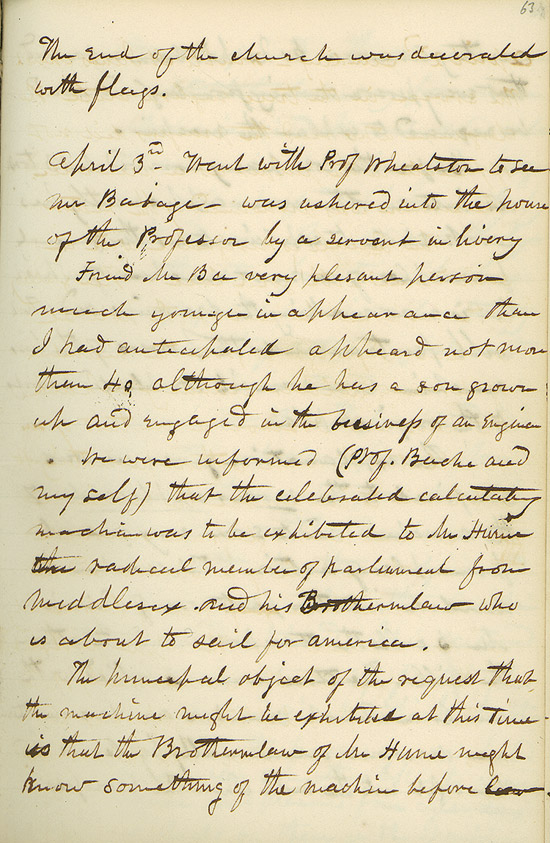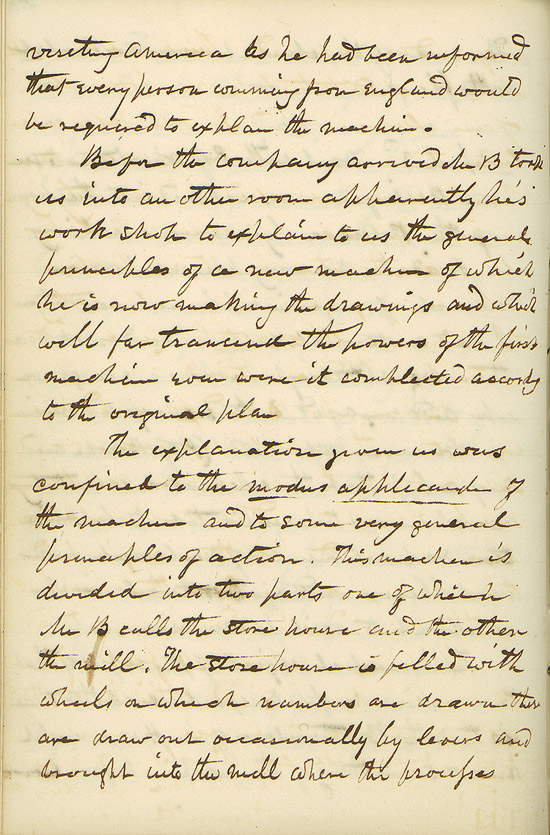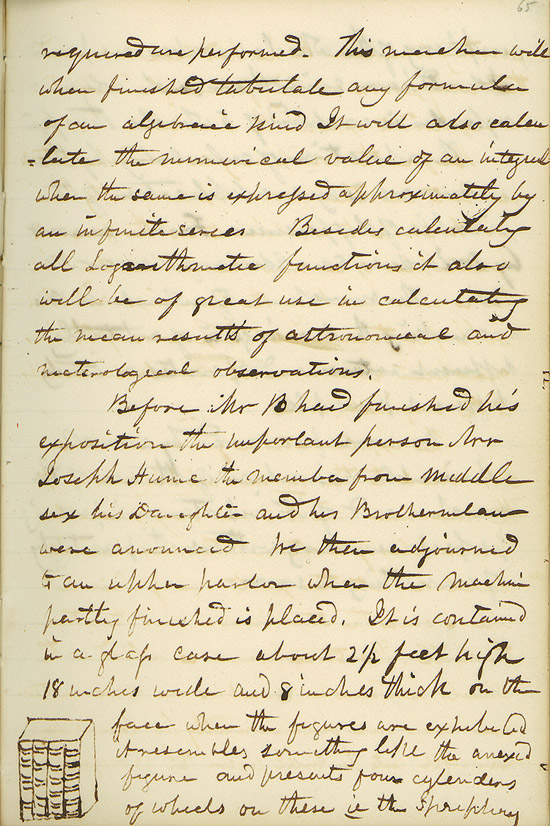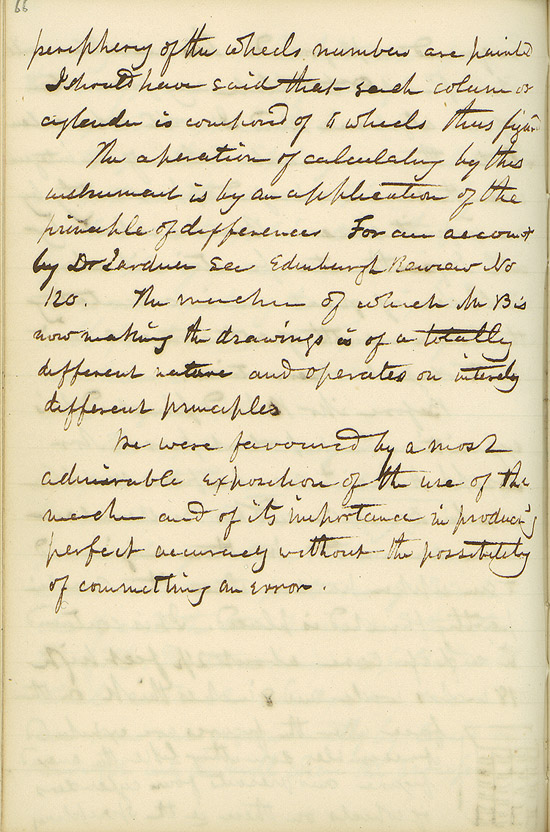 |
|---|
| Henry Documents |
| Chronology |
| Scientists index |
| Bibliography |
| Glossary |
|
Joseph
Henry | ||
| DOCUMENTS
| ||
| The entry below is from the diary Henry kept of his first trip to Europe. He conceived of his diary chiefly as a scientific and technical record. His tour lasted from March to October 1837, and he met many of the leading scientists in Britain, France, and Belgium. This entry concerns his visit with British polymath Charles Babbage, whose famous calculating machine was a precursor of the computer. | ||
| HENRY'S EUROPEAN DIARY 8 | ||
| April 3rd [1837] Went with
Prof Wheatstone9 to see Mr Babage.10 Was ushered into the
house of the Professor by a servant in livery. Found Mr B a very
plesant person much younger in appearance than I had
anticipated.
Appeared not more than 40 although he has a son grown up and engaged in
the business of an engineer.11 We were informed (Prof. Bache12 and my self) that the celebrated calculating machine was to be exhibited to Mr Hume13 the radical member of parliament from Middlesex and his Brotherinlaw14 who is about to sail for america. The principal object of the request that the machine might be exhibited at this time is that the Brotherinlaw of Mr. Hume might know something of the machine before visiting America as he had been informed that every person comming from England would be required to explain the machine. Before the company arrived Mr B took us into an other room apparently his work shop to explain to us the general principles of a new machine15 of which he is now making the drawings and which will far transend the powers of the first machine16 even were it compleeted according to the original plan. The explanation given us was confined to the modus applicandi of the machine and to some very general principles of action. This machine is divided into two parts one of which Mr B calls the store house and the other the mill. The store house is filled with wheels on which numbers are drawn. These are drawn out occasionally by levers and brought into the mill where the processes required are performed. This machine will when finished tabulate any formula of an algebraic kind. It will also calculate the numerical value of an integral when the same is expressed approximately by an infinite series. Besides calculating all Logarithmetic functions it also will be of great use in calculating the mean results of astronomical and meterological observations. Before Mr B had finished his exposition the important person Mr Joseph Hume the member from middlesex his Daughter17 and his Brotherinlaw were anounced. We then adjourned to an upper parlor where the machine partly finished is placed. It is contained in a glass case about 2½ feet high 18 inches wide and 8 inches thick on the face where the figures are exhibited. It resembles something like the anexed figure and presents four cylenders of wheels. On these ie the periphery of the wheels numbers are painted. I should have said that each colum or cylender is composed of 4 wheels thus figured. The operation of calculating by this instrument is by an application of the principle of differences. For an account by Dr Lardner see Edinburgh Review No 120.18 The machine of which Mr B is now making the drawings is of a totally different nature and operates on interely different principles. We were favoured by a most admirable exposition of the use of the machine and of its importance in producing perfect accuracy without the possibility of committing an error. |
||
| Henry Papers, Smithsonian Archives. Published in Nathan Reingold et al., eds. The Papers of Joseph Henry, vol. 3, January 1836-December 1837: The Princeton Years (Washington,1979), pp. 224-226. | ||




